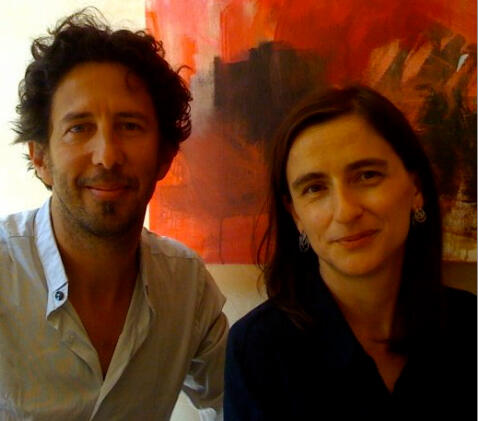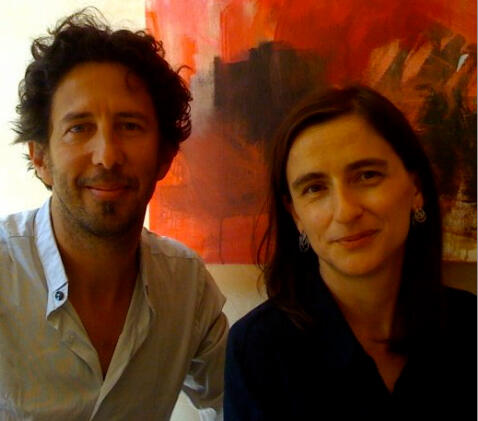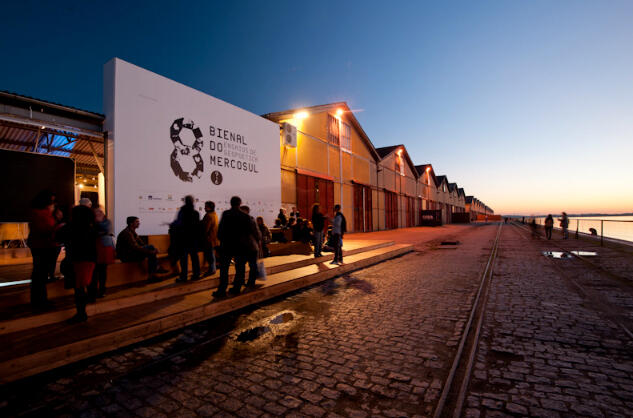José Roca in a conversation with María Inés Rodríguez
The Colombian curator José Roca, who is the newly appointed Estrellita B. Brodsky Adjunct Curator of Latin American Art at Tate, London, and who represents the gallery in Latin America and plays a leading role in strengthening its already close relationship with the art of the region, was interviewed by his fellow countrywoman, María Inés Rodríguez, recently appointed Chief Curator at the Tamayo Museum, after having served in the same capacity at the Castile and León Museum of Contemporary Art (MUSAC).

This informal and open conversation, which is included in our recently created section, Curator to curator, reveals a crucial horizon in the view towards broadening the scope of Latin American art.
MIR: I would like us to begin with the prehistory. We met a long time ago while working in art-related activities. At that time we had not yet opted for the field of curatorship, but it was an important formative period. Do you think that period determined your decision to eventually become a curator?
JR: Having studied architecture, my first relationship with the art world came through museography. I started mounting exhibitions, and little by little I became familiar with contemporary art. This period coincided with a “post-studies” situation in Colombian art, when artists began to create works directly related to the space that would host them; unlike what had been customary in the previous generation, in these cases they were not works produced in the studio and then taken to the museum to be mounted. My work as a museographic mediator allowed me to closely understand the way of thinking and acting of these artists, who are all more or less of my same age: José Alejandro Restrepo, Juan Fernando Herrán, Doris Salcedo, and María Fernanda Cardoso, among others. The most influential person during my early training − because of her keen eye for art, her sense of ethics, her texts…− was Carolina Ponce de León, who was my superior at the Visual Arts Department of the Banco de la República.
MIR: What interested you so much about curatorship that it led you to relinquish architecture? Although it may have been, as it sometimes happens, simply a natural process gradually derived from encounters, affinities…
JR: As I pointed out earlier, the transition was natural, almost logical. I left the Faculty of Architecture and landed almost directly at the museum, since I only worked briefly as an architect, and I realized that I was more attracted to the practice of museum activities. Museography is in a certain way a kind of architecture, except that it is temporary, and it takes into account many essential factors of architectonic design: the morphology of the spaces, the itineraries, the importance of color and light, and the way in which the bodies are placed and perceived in a given space. With the additional element of knowing that all this is done for two “clients”: the artist (and his/her work), and the public. When I was in Paris pursuing post-graduate studies, I took an even greater interest in contemporary art, and I got a one-year job as museography assistant for an exhibition curator at the Centre Pompidou. While I was still working there I was offered the position of Head of the Arts Department in Colombia, for Carolina had presented her resignation after a very fruitful decade at the Bank. In the half year I had left to finish my work in Paris, I attentively watched what was being done in the different museums; I talked to the Pompidou’s curators; I read a lot. When I returned to Colombia, what I did mostly at the beginning was management, and then little by little I began to develop curatorial projects. If we take into account that I spent 18 years at the Bank, there were really not so many projects, perhaps around ten curatorial projects, less than one every two years. My work consisted fundamentally in the management and production of exhibition curated by others.
MIR: During the period when you were in charge of the exhibitions at the Luis Ángel Arango Library, perhaps the most important institution in Colombia in the field of art, more space was assigned to contemporary art and other spaces were renovated or built. What is your current view of that stage in your career?
JR: I continued with many of the projects Carolina had set in motion, and proposed many more. We created the Art Museum of the Banco de la República, for until then the Visual Arts Department had been a section of the Luis Ángel Arango Library; the old spaces of the Casa de Moneda were renovated to host the Bank’s collection in a permanent way for the first time; we mounted the Botero Museum; we constructed a new building to host temporary exhibitions; we implemented a very intensive international, national and regional program including over 25 exhibitions every year, and we established the Bank’s Art Museum as one of the unavoidable referents in the Latin American museums’ circuit. The last project I implemented was El Parqueadero exhibition space, a laboratory destined to present the more experimental proposals. In 2008 I considered that my contribution to the art milieu had already been completed, and that it was time to resign in order to embark on other projects.
MIR: How do you conceive the artist/curator relationship?
JR: I think it must be a relationship based on collaboration. As Harald Szeemann used to say, in art the verb can is used as in I “can facilitate the realization of the artist’s ideas.” From Szeemann I have learned a lot, I have only spoken to him twice, but I have read his texts and I visited several of his exhibitions. As a matter of fact, one of my bedside books is Ecrire les expositions, the compilation of texts by Szeemann that you gave me as a gift more than fifteen years ago.
MIR: Tell me about a project you consider has been fundamental in your career.
JR: There have been many, but I would highlight the 8th Mercosur Biennial (2011), which has been the best experience I have had at the professional level. After having participated in seven biennial-like projects, when I was offered the chance to curate the Mercosur Biennial it was already very clear to me what worked and what did not in these types of exhibitions, what the strengths and the limitations of the Biennial format are. I presented it as a project comprising seven components, in an attempt to broaden the action of the biennial in time and in the territory, so that it would not simply be a huge exhibition. I was very happy with the results.
MIR: Now you are working as a curator of Latin American Art with Tate’s Latin American Acquisitions Committee. What will be the approach that will guide your proposals?
JR: I am the third curator in this position (Estrellita B. Brodsky Adjunct Curator of Latin American Art), so a lot of work has already been done by my predecessors (Cuauhtémoc Medina and Julieta González) which I will continue. I am interested in those figures situated at the intersection between the modern and the contemporary generations that have often fallen into oblivion even in their respective countries. I will provide no names, because it is a well-known fact that the decisions and interests of the institutions that define the canon − whether deliberately or not − have a significant effect on the market, and if there is public evidence of an interest in a particular artist, the possibility exists that his or her work may become inaccessible even to us. But we all know who they are…





